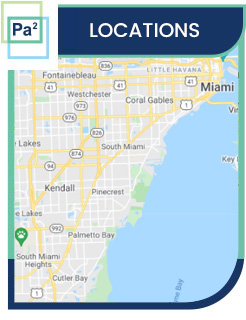What Are Different Types of Allergens?
Allergens like pollen, dust mites, cat dander, mold, and certain foods can cause mild to severe allergic reactions. Comprehensive allergy testing helps identify triggers and develop personalized treatment plans. Our board-certified allergist Dr. Carlos Piniella, MD at Piniella Asthma + Allergy offers allergy testing and treatments. Book your next appointment now so that we can help you treat your allergies! Contact us or book an appointment online for more information. We have convenient locations in Coral Gables, FL and Palmetto Bay, FL.


Table of Contents:
What are allergens?
How do allergens work?
What are the different types of allergens?
How allergies are diagnosed?
Allergens are substances that can trigger an allergic reaction in some people. When an individual comes into contact with an allergen, their immune system identifies it as a foreign substance and produces an antibody called immunoglobulin E (IgE) to fight against it.
These antibodies attach themselves to mast cells and basophils, which are cells that release histamine and other chemicals in response to an allergen. This causes the symptoms associated with an allergic reaction, such as itching, hives, sneezing, and difficulty breathing.
Allergens can come in many different forms, including proteins, chemicals, and particles. Some common allergens include pollen, animal dander, dust mites, mold spores, insect venom, certain foods (such as peanuts, shellfish, and dairy), and medications. Allergens can also be found in the environment, such as in the air or on surfaces, and can be transmitted through direct contact or through ingestion.
Different types of allergens work in different ways to trigger an allergic reaction. For example, pollen allergens are typically inhaled and can cause symptoms such as sneezing, runny nose, and itchy eyes.
Food allergens, on the other hand, are ingested and can cause symptoms such as swelling, hives, and difficulty breathing. Insect venom allergens are typically injected into the skin and can cause symptoms such as swelling, itching, and difficulty breathing.
There are several different types of allergies, and they can affect different parts of the body. One of the most common types of allergies is respiratory allergies, which affect the nose, throat, and lungs. This type of allergy is often caused by airborne allergens such as pollen, dust mites, and pet dander. Symptoms can include sneezing, runny nose, nasal congestion, and difficulty breathing.
Seasonal allergies, also known as hay fever or allergic rhinitis, are a type of respiratory allergy that occurs during certain times of the year, typically during the spring and fall months. They are caused by airborne allergens such as pollen, grass, and weeds.
When an individual with seasonal allergies comes into contact with these allergens, their immune system produces IgE antibodies that trigger the release of histamine and other chemicals, causing symptoms such as sneezing, runny nose, itchy eyes, and congestion.
Food allergies are another type of allergy that can cause a range of symptoms such as hives, swelling, and difficulty breathing. Common food allergens include peanuts, tree nuts, shellfish, and dairy products. In some cases, food allergies can be severe and even life-threatening, such as in the case of anaphylaxis. Anaphylaxis is a severe allergic reaction that can cause symptoms such as swelling of the throat and difficulty breathing and requires immediate medical attention.
Diagnosing allergies typically involves a combination of medical history, physical examination, and allergy testing. During a medical history, the doctor will ask about the individual’s symptoms, when they occur, and if there is any known exposure to allergens. A physical examination may also be conducted to check for any physical signs of an allergic reaction, such as swollen nasal passages or hives.
Allergy testing can help to identify specific allergens that may be causing an individual’s symptoms. There are several different types of allergy testing, including skin prick testing, intradermal testing, and blood testing.
Skin prick testing involves placing a small amount of allergen on the skin and then pricking the skin to see if a reaction occurs. Intradermal testing involves injecting a small amount of allergen under the skin to see if a reaction occurs. Blood testing involves taking a sample of blood and measuring the amount of IgE antibodies present in the blood.
Allergy testing is available at Piniella Asthma + Allergy. We serve patients from Coral Gables FL, Palmetto Bay FL, Westchester FL, Brownsville FL, Kendall FL, Pinecrest FL, Richmond West FL, and Goulds FL.

Additional Services You May Need
▸ Asthma
▸ Allergy Testing
▸ Food Allergies
▸ Immunotherapy
▸ Patch Testing
▸ Allergy Treatment
▸ Pediatric Asthma Specialist
▸ Pediatric Allergist
▸ Insect Bite Allergy
▸ Drug Allergy
▸ Seasonal Allergies
▸ Skin Allergy

Additional Services You May Need
▸ Asthma
▸ Allergy Testing
▸ Food Allergies
▸ Immunotherapy
▸ Patch Testing
▸ Allergy Treatment
▸ Pediatric Asthma Specialist
▸ Pediatric Allergist
▸ Insect Bite Allergy
▸ Drug Allergy
▸ Seasonal Allergies
▸ Skin Allergy


